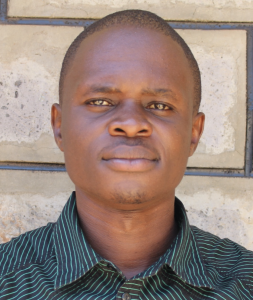Govet Lumbasi Spring is a permanent water source that serves a large population - about 500 people in the Shianda Community. But currently, the spring is exposed to contaminants as the catchment area has not been protected, and its yield is only being partially captured.
The most common pollutants are carried into the spring water through runoff, which seeps into the ground and flows out through the spring's makeshift pipe. Farm chemicals, animal waste, and eroded soil are the primary concerns. The area around the spring is not clean either, contributing to the contamination. Community members report frequent cases of typhoid and cholera among families who depend on this spring, which are expensive to treat. Time spent at home and in the hospital while sick means less productive time for adults and missed classes for children, causing them to fall behind in school.
"Water from the spring is not safe for me as the catchment area has been exposed to contaminants. Twice I have contracted typhoid and this I relate to the water from our spring, for we at times cannot afford treating the water we drink," said young primary school-aged student Shirleen.
Accessibility is the other big challenge at Govet Lumbasi Spring. There are no stairs guiding the path to the spring, so it becomes challenging, especially during the rainy season, for people to enter and exit the wet, slippery area. The access point is defined by a constant pool of water that people have to stand in to fetch water, with soft sand and mud in every direction. Occasionally, community members slip and injure themselves while trying to leave the spring, forcing them to seek medical attention. This wastes more of their time, energy, and financial resources.
To aid in fetching water, the community improvised a discharge pipe by lodging it directly into the earth near where the spring water comes to the surface of the ground. But a lot of water escapes around the pipe, which means slower fill times and long lines at the spring. Time spent waiting at the spring eats into community members' time as a majority of them are employed in the nearby town and would wish to report to their work stations in time. The overcrowding gets worse during weekends and holiday seasons.
"Having not been protected, l waste much time drawing water from the spring due to the low discharge as we have not been able to tap most of the water. Occasionally I report to my workplace very late," said a concerned Nasiche Atswenje, a 62-year-old farmer living in the community.
Currently, the community is trying to observe proper hygiene and sanitation standards. But since they are limited in how much water they are able to collect each day due to the limited yield and resulting slower fill times at the spring, they are not meeting those standards and their health is being compromised.
What We Can Do:
Spring Protection
Protecting the spring will help provide access to cleaner and safer water and reduce the time people have to spend to fetch it. Construction will keep surface runoff and other contaminants out of the water. With the community’s high involvement in the process, there should be a good sense of responsibility and ownership for the new clean water source.
Fetching water is a task predominantly carried out by women and young girls. Protecting the spring and offering training and support will, therefore, help empower the female members of the community by freeing up more of their time and energy to engage and invest in income-generating activities and their education.
Training on Health, Hygiene, COVID-19, and More
To hold trainings during the pandemic, we work closely with both community leaders and the local government to approve small groups to attend training. We ask community leaders to invite a select yet representative group of people to attend training who will then act as ambassadors to the rest of the community to share what they learn. We also communicate our expectations of physical distancing and wearing masks for all who choose to attend.
The training will focus on improved hygiene, health, and sanitation habits in this community. We will also have a dedicated session on COVID-19 symptoms, transmission routes, and prevention best practices.
With the community’s input, we will identify key leverage points where they can alter their practices at the personal, household, and community levels to affect change. This training will help to ensure participants have the knowledge they need about healthy practices and their importance to make the most of their water point as soon as water is flowing.
Our team of facilitators will use a variety of methods to train community members. Some of these methods include participatory hygiene and sanitation transformation, asset-based community development, group discussions, handouts, and demonstrations at the spring.
One of the most important issues we plan to cover is the handling, storage, and treatment of water. Having a clean water source will be extremely helpful, but it is useless if water gets contaminated by the time it is consumed. We and the community strongly believe that all of these components will work together to improve living standards here, which will help to unlock the potential for these community members to live better, healthier lives.
We will then conduct a small series of follow-up trainings before transitioning to our regularly scheduled support visits throughout the year.
Training will result in the formation of a water user committee, elected by their peers, that will oversee the operations and maintenance of the spring. The committee will enforce proper behavior around the spring and delegate tasks that will help preserve the site, such as building a fence and digging proper drainage channels. The fence will keep out destructive animals and unwanted waste, and the drainage will keep the area’s mosquito population at a minimum.

 Protected Spring
Protected Spring
 Rehabilitation Project
Rehabilitation Project







































